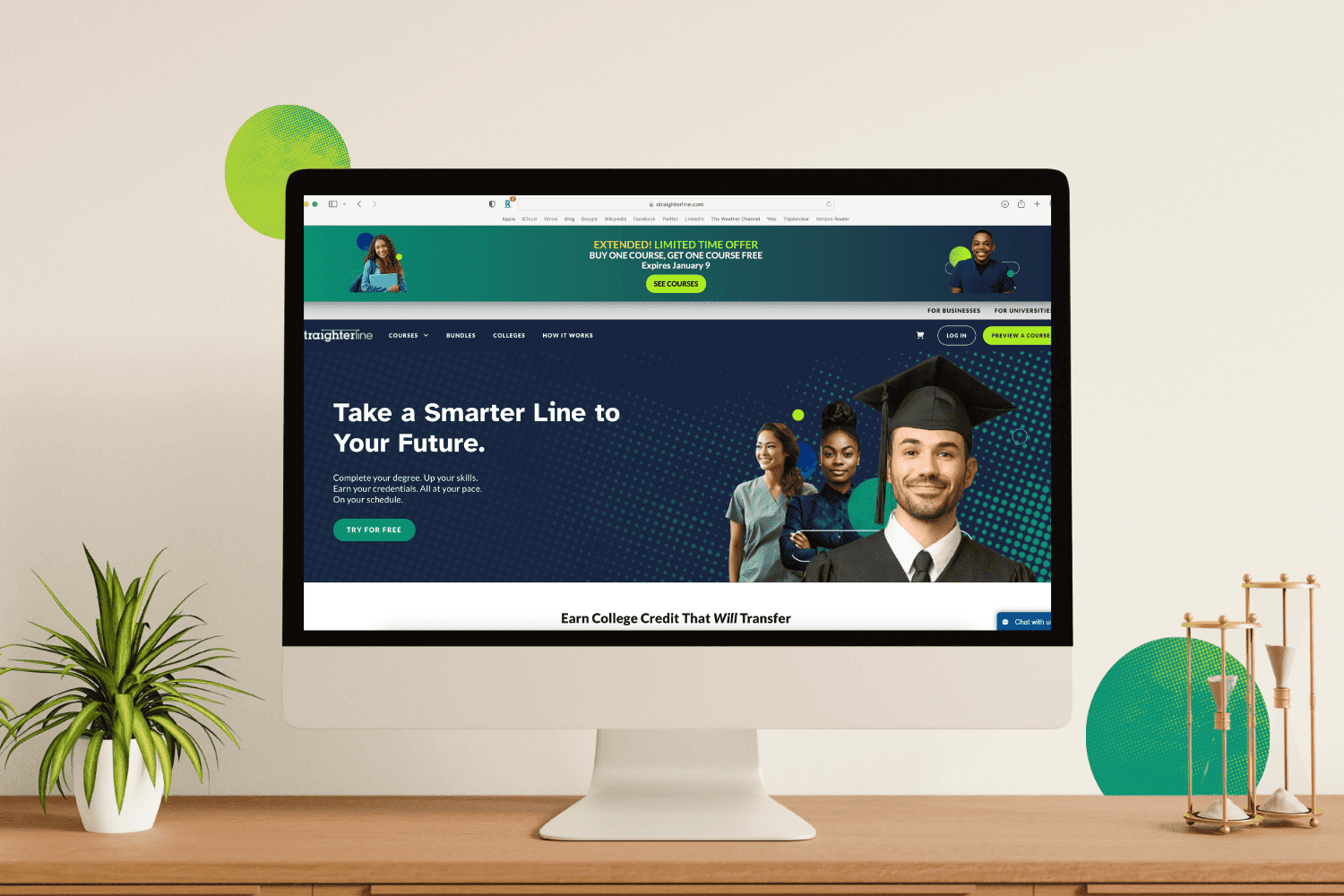If you’re considering taking an online course but have never done so before, you probably have a lot of questions about online learning--but we’re here to demystify things for you! In this article, you’ll find answers to seven of the most common questions students ask about how to take an online course.
What do I need for online classes?
You don’t usually need a lot of specialized tools to be successful in an online class, but there are some basics you should ensure you have access to before you get started.
- Secure, dependable wifi. If you don’t have a good wifi connection at home, scout local libraries, community centers, and schools to see if there are dedicated places you can use to work through your course material and study.
- A computer or tablet. While it’s possible to take a course only using your phone, reading long articles and writing papers can be difficult. Additionally, though most learning management systems have mobile apps you can download, using the app may offer you a slightly different experience than accessing the app through your school’s portal on the web.
- If you’re taking an online class, there’s a good chance that your textbooks will be accessible online too, but that’s not always the case. Be sure you are able to get a copy of your textbook before your class begins.
- A designated (preferably quiet) place to study and complete assignments. You don’t need a fancy home office to take an online class, but setting aside a specific place to do your schoolwork can help get you in the zone.
How do I start my first online class?
How and when you’ll start your first online class depends on the school you’ve chosen. If you plan to take online classes at a school that doesn’t have open enrollment policies, you’ll first need to submit an application and be accepted. (Some applications are free, while others may require you to pay a small fee. If the fee is an issue, ask if it can be waived--it never hurts to try.) Most schools that require you to be formally admitted have official start dates. Depending on the school you choose, you may need to wait anywhere from a few days to a few months before you can begin taking classes. If you’re eager to get started but can’t for some time due to your school’s start dates, or if you’re looking for an open enrollment option, consider a course from a online college course provider like StraighterLine. Once you sign up for a StraighterLine course, you can start it the very same day.
How much does it cost to take online classes?
In the same way that there’s a significant degree of variation among how much traditional face-to-face classes cost, there’s also a wide range of prices for online classes. If you’re taking an online course from an accredited non-profit institution that charges tuition by the class, you can probably expect to pay somewhere between $300 and $700 per credit hour, depending on your residency and the degree you’re seeking. Most classes are 3 credit hours, so you can expect to pay anywhere between $900.00-$2000.00 per course. Not all colleges charge by the credit hour or course, though. Some schools, like Western Governor’s University, have fixed-priced terms. That means you’ll pay a flat rate for a 6-month term during which you can complete as many or as few courses as you choose. It’s important to note that taking an online college class through a university isn’t your only option, and you can potentially save money by taking general education credits outside of a university. Online course providers like StraighterLine offer students the ability to take classes at a significant discount as compared to both traditional and flat-rate tuition plans. StraighterLine charges a monthly subscription fee of $99; once you’ve paid the fee, you can take as many classes as you choose. Classes range in price, but most are only $79. If you’re unsure if online learning is a good choice for you, taking an online class or two with StraighterLine allows you to assess your comfort in a comparatively low-risk way.
How many hours are online classes?
If you’re taking a 3-credit class at a traditional institution, you can expect to spend about 120 hours completing the course material. Depending on the length of your term, the amount of time you’ll spend each day or week will vary. Using a credit hour calculator can help you better understand how to budget your time. If you’re taking a competency-based or self-paced class, the amount of time you’ll need to spend will depend on how quickly you are able to move through the material. If you’re new to a subject and the course you’re taking is equivalent to three credits, expect to spend about 120 hours completing the class. Many, students, however find that they can complete a self-paced class in less than a month
How do I pay for online classes?
You can pay for online classes just as you would pay for traditional classes, either through some form of financial aid or out of pocket. You may be eligible for financial aid through the federal or your state government, or through the institution you’re attending in the form of a scholarship. Employers or private organizations also frequently offer prospective college students financial help, so research any companies or groups you’re affiliated with to see if they can help. While a college’s affordability is always important, it’s even more critical to choose a cost-effective option if you plan to pay out of pocket. If you’re on a budget but still want to work towards your degree, taking low cost online course options through providers like StraighterLine can help you achieve your educational goals without breaking the bank. StraighterLine charges a monthly subscription fee of just $99, and you can take as many high-quality, low-cost courses each month as you choose.
What are tips for success in completing an online course?
Getting a game plan together before starting your online class can help you maximize your ability to be successful. Use the following tips to help you stay on track:
- Make your classes part of your routine--dedicate time and space for your schoolwork.
- Establish a support network. Ask your family and friends to help you stay accountable, and be proactive in reaching out to advisors, tutors, or professors for help.
- Practice good study habits. Hone your note-taking skills, and take even small assignments seriously. Doing so will ensure that you’re ready to ace your exams or essays.
- Don’t neglect your physical or mental wellness.You’ll be able to give more energy to your studies if your body and mind are healthy.
What if I fail an online class?
Failing an online class doesn’t have to derail your academic career. If you fail a class, make sure to talk with your professor about how you can improve in the future, and chat with your advisor about the effect failing a class will have on your estimated time to graduation and financial aid, if you’re receiving any. Distance learning can seem intimidating at first, but if nearly 7 million people a year can do it, so can you! And remember that knowledge is power--now that you know more about online classes, you can confidently choose a school or program that’s right for you. Anissa Sorokin, Ph.D., is an Assistant Professor of English and Writing Program Administrator at Stevenson University near Baltimore, Maryland. Anissa’s interdisciplinary background and extensive experience teaching research, writing, and study skills help her demystify college expectations for students online and in her classroom. Looking for study tips to help you successfully complete an online course? Check out this great article: Tips for Effective Online Learning












